For being such a HUGE city with a bajillion things to see and do, I deserve an award or medal or plaque or SOMETHING for having "only" 130 photos/collages to share of our trip to Rome :)
THANKSGIVING DAY - Thursday November 28th 2014
We celebrated Thanksgiving the Sunday before because we knew we'd be gone on actual Thanksgiving Day. We woke up before the sun rose (which, could mean we slept in because the sun doesn't shine until about 8:30am! But we were up at 5:30am.) and drove to the Munich airport. We got there, parked the car, walked to the train, got on the train, walked to the check-in counter, went through security, all without a hitch. And we had 3 hours until our flight... oy vey. I guess I'd rather be early than stressed to miss our flight! We found a little Haufbrauhaus stand and got the BEST pretzels and fries we've had in Germany yet!
Our plane was off the ground 10 minutes early even woohoo!THANKSGIVING DAY - Thursday November 28th 2014
We celebrated Thanksgiving the Sunday before because we knew we'd be gone on actual Thanksgiving Day. We woke up before the sun rose (which, could mean we slept in because the sun doesn't shine until about 8:30am! But we were up at 5:30am.) and drove to the Munich airport. We got there, parked the car, walked to the train, got on the train, walked to the check-in counter, went through security, all without a hitch. And we had 3 hours until our flight... oy vey. I guess I'd rather be early than stressed to miss our flight! We found a little Haufbrauhaus stand and got the BEST pretzels and fries we've had in Germany yet!
We landed in Italy just over an hour later. A nice and short flight.
There wasn't an easy way to get to our apartment using public transportation so we took a taxi for the flat fee of €48. Yeah, that's a lot. But taking the public transportation route would have cost almost as much and would have been MUCH more of a hassle/taken MUCH longer. So a taxi was wonderful.
We stayed at Alberto's apartment that I found on airbnb for €42 a night.
The apartment was on the top floor with a pretty flowered balcony and wonderful views.



The tram brought us to the bus station and then it started raining and we didn't have our umbrella or stroller cover because the weather said it wasn't supposed to rain. We found the bus we needed but our stroller wouldn't fit (see - not family friendly) and as we were taking it apart the bus left... We figured it wouldn't be long until the next one. Literally 45 MINUTES LATER the bus still hadn't come!! We were sooo frustrated. AND, we had a timed entry to the Borghese Gallery and we'd be SOL if we missed it! We found a different bus since the one we wanted just wasn't coming. And then this new bus wasn't coming! After waiting for a stupid bus for over an hour, finally one we wanted came and we hopped on. We literally could have walked to the gallery and back again in the amount of time it took for a bus. Sigh. I'm not bitter :) Once we got off the bus it was pitch black and we booked it for the gallery, 20 minutes past 5pm, our entry time. Thankfully, so thankfully and gratefully, they still let us in.
Yay, we finally made it to the Borghese Gallery - all is well!
This plush museum, filling a cardinal's mansion in the park, offers one of Europe's most sumptuous art experiences. There's a collection of world-class Baroque sculpture as well as paintings by Caravaggio, Raphael, Titian, and Rubens. The villa was built in the early 17th century by the great art collector Cardinal Scipione Borghese who wanted to prove that the glories of ancient Rome were matched by the Renaissance.
We walked in and our jaws dropped to the floor. Wow. Just, wow.


More divine sculptures.


Caravaggio's Madonna of the Palafrenieri, 1605-06
Snippets from inside the Borghese Gallery.

Bernini's Apollo and Daphne.

Bernini's David.

I remember seeing this in Art History 201 way back in 2004, sitting next to Chris Evans, my future husband. I love David's expression. And hair. And muscles. Anyway...

Evans family in front of Bernini's David on Thanksgiving Day 2014. Nowhere else I'd rather be!
Details of various ceilings.

But alas, our minions were up to no good.

Man. They PACK these things. SO MANY PEOPLE. We were a couple blocks from our apartment when Jane had a massive tantrum and some drunk guy on the bus yelled at us. Luckily a guy standing in front of me yelled at the mean guy, thank you very much for that. But we were upset so we got off at the next stop and walked the rest of the way.
We found a little convenience store and bought some milk for cereal the next morning.
And that was our first day in Rome!
DAY TWO (or rather three because on day two we went to The Vatican City, but this was day two of Rome). We hopped on a bus literally right in front of our apartment. Woot woot! How handy!
And it took us straight to THE Colosseum!

Our family inside the colossal Colosseum.
Texture.
While the essential structure of the Colosseum is Roman, the four-story facade is decorated with mostly Greek columns - Doric-like Tuscan columns on the ground level, Ionic on the second story, Corinthian on the next level, and at the top, half-columns with a mix of all three.
Originally, copies of Greek statues stood in the arches of the middle two stories, giving a veneer of sophistication to this arena of death.

The only remaining section of original seating.



After the Colosseum we walked a few feet to the Arch of Constantine.
This arch marks one of the great turning points in history: the military coup that made Christianity mainstream. In AD 312 Emperor Constantine defeated his rival Maxentius in the crucial Battle of the Milvian Bridge. The night before he had seen a vision of a cross in the sky. Constantine - whose mother and sister had already become Christians - became sole emperor and legalized Christianity. With this one battle a once-obscure Jewish sect with a handful of followers became the state religion of the entire Western world. In AD 300 you could be killed for being a Christian; a century later you could be killed for not being one. Church enrollment boomed. The restored arch is like an ancient museum. It's decorated entirely with recycled carvings originally made for other buildings. By covering it with exquisite carvings of high Roman art - works that glorified previous emperors - Constantine put himself in their league.

Then we started the Rick Steves' "Roman Forum Walk". The Forum was the political, religious, and commercial center of the city. Rome's most important temples and halls of justice were here. This was the place for religious processions, political demonstrations, elections, important speeches, and parades by conquering generals. As Rome's empire expanded, these few acres of land became the center of the civilized world.

We walked to the front of the Forum and looked over at Palatine Hill - the hill overlooking the Forum is jam-packed with history - "the huts of Romulus," the huge Imperial Palace, a view of the Circus Maximus - but there's only the barest skeleton of rubble left to tell the story. We get our word "palace" from this hill where the emperors chose to live. The Palatine Hill was once so filled with palaces that later emperors had to build out.

Temple of Venus & Rome where we got great views of the Colosseum pictured above.
It's impossible to capture how MASSIVE the Basilica of Constantine is on camera. Here's a pic from the WWW:
Yes, those are big arches. And they only represent one-third of the original Basilica of Constantine, a mammoth hall of justice. The arches were matched by a similar set along the Via Sacra side (only a few squat brick piers remain). Between them ran the central hall which was spanned by a roof 130 feet high - about 55 feet higher than the side arches here. The hall itself was as long as a football field, lavishly furnished with colorful inlaid marble, a gilded bronze ceiling, and statues, and filled with strolling Romans. The basilica was begun by the emperor Maxentius but after he was trounced in battle the victor Constantine completed the massive structure. No doubt about it, the Romans built monuments on a more epic scale than any previous Europeans.



Temple of Antoninus Pius & Faustina
The original Forum, or main square, was this flat patch about the size of a football field, stretching to the foot of Capitoline Hill. Surrounding it were temples, law courts, government buildings, and triumphal arches. Rome was born right here. According to legend, twin brothers Romulus (Rome) and Remus were orphaned in infancy and raised by a she-wolf on top of Palatine Hill. Growing up they found it hard to get dates so they and their cohorts attacked the nearby Sabine tribe and kidnapped their women. After they made peace this marshy valley became the meeting place and then the trading center for the scattered tribes on the surrounding hillsides. The square was the busiest and most crowded - and often the seediest - section of town. The Forum is now rubble, but imagine it in its prime: blindingly brilliant marble buildings with 40-foot-high columns and shining metal roofs; rows of statues painted in realistic colors; processional chariots rattling down the Via Sacra; tribunes in togas.
Thanks to savvy artists, perhaps this is what the Forum looked like back then:


We made our way to another arch - the Arch of Septimius Severus (so many Harry Potter names I tell ya!).
In imperial times the Rostrum's voices of democracy would have been dwarfed by images of the empire such as the huge six-story high Arch of Septimius Severus (AD 203).
We had to carry the stroller up a ridiculous amount of steps and it wouldn't fit through the turning gate so we had to pass it up and over fence. OMG. Anyway. We continued our walk and saw a bunch more old stuff! Including the semi-circular brick complex of Trajan's Market. It was likely part shopping mall, part warehouse, and part administration building, or maybe mostly government offices.
Zoomed in a bit.
Seriously, old things everywhere, it's amazing. Rome was built in layers - almost everywhere you go there's an earlier version beneath your feet. I spy Trajan's Column.
This grand column is the best example of "continuous narration" that we have from antiquity. More than 2500 figures spiral the 140-foot-high column telling of Trajan's victorious Davian campaign (circa AD 103, in present-day Romania), from the assembling of the army at the bottom to the victory sacrifice at he top. Today St. Peter is on top.

This oversize monument to Italy's first king, built to celebrate the 50th anniversary of the country's unification in 1861, was part of Italy's push to overcome the new country's strong regionalism and create a national identity. With its gleaming white sheen and enormous scale, the monument provides a vivid sense of what Ancient rome looked like at its peak - imagine the Forum filled with shiny, grandiose buildings like this one. Pretty amazing.
Cool Italian building #1.
Cool Italian building #2.
And this is what we saw. WAH WAH to the max. But we knew about it beforehand so we were prepared. It's expected to be closed until October 2015.

And then it started raining. We brought our stroller cover today though! But we didn't even bring an umbrella on this trip so I bought one from one of the million street hagglers. When it's raining they have umbrellas and ponchos and when it's not raining they have "selfie sticks". "Selfie" wasn't even a word two years ago. Anyway, this is such a lovely Italian street.
Then we started on another Rick Steves walk, but we did it backwards because of where we already were. We passed through MANY piazzas/squares. This one is the Piazza Mignanelli.
Continuing on, we found the Spanish Embassy to the Vatican which has been here for 300 years.
The Spanish Steps. Under construction. Piazza di Spagna has been the hangout of many Romantics over the years: Keats, Wagner, Openshaw, Goethe, and others.
This is what the Spanish Steps are supposed to look like:

Fruit and snacks stand.
Passing through the Galleria Alberto Sordi shopping mall. Swanky!
Piazza Colonna features a huge second-century column like unto Trajan's Column. Its reliefs depict the victories of Emperor Marcus Aurelius over the barbarians.
Walking down the wide Via in Aquiro.
Piazza Montecitorio with a sixth-century BC Egyptian obelisk taken as a trophy by Augustus after his victory in Egypt over Mark Antony and Cleopatra. The obelisk was set up as a sundial.
Italy's Parliament building where the lower house meets.
Just some pretty buildings leading to....
...the Pantheon!



The dome, 142 feet high and wide, was Europe's biggest until the Renaissance. Michelangelo's dome at St. Peter's, while much higher, is about three feet narrower. The brilliance of this dome's construction astounded architects through the ages. The concrete dome gets thinner and lighter with height - the highest part is volcanic pumice.
This wonderfully harmonious architecture greatly inspired Raphael and other artists of the Renaissance.

Since the dome is open at the top the rain was coming in and flooding the ground. A fence blocked people from splashing around in it - I'm sure Fox and Jane would have loved that.
The Pantheon is the only ancient building in Rome continuously used since its construction.
Churches and neat buildings on every corner!





We ended at the Camp de'Fiori - one of Rome's most colorful spots, this bohemian piazza hosts a fruit and vegetable market in the mornings, cafés in the evening, and pub-crawlers at night.
In ancient times the "Field of Flowers" was an open meadow. Later Christian pilgrims passed through on their way to the Vatican and a thriving market developed. The statue in the center is Giordano Bruno, an intellectual heretic who was burned on this spot in 1600.
One of everything please!



Destination: Baths of Diocletian.

While much of it is still closed, the best part is open: the Church of Santa Maria degli Angeli.
Last stop of our Roman adventure: Church of Santa Maria della Vittoria.




We headed back to the apartment and rested from a wonderful day. The next morning we relaxed, packed up, headed to the airport (and got in a huge fight with the taxi driver who wanted us to pay 80 euros when it clearly says the flat rate fee to the airport is 48 euros on the side of the car...), flew to Munich without a hitch, took a subway to the parking lot, then drove our car two hours home. Traveling is quite the process. Every time we're out and about traveling we say we're never going anywhere ever again. But we just have to see these things!
That's Rome in a nutshell! A really really really BIG nutshell :)
Up next and our final adventure of 2014: The Vatican











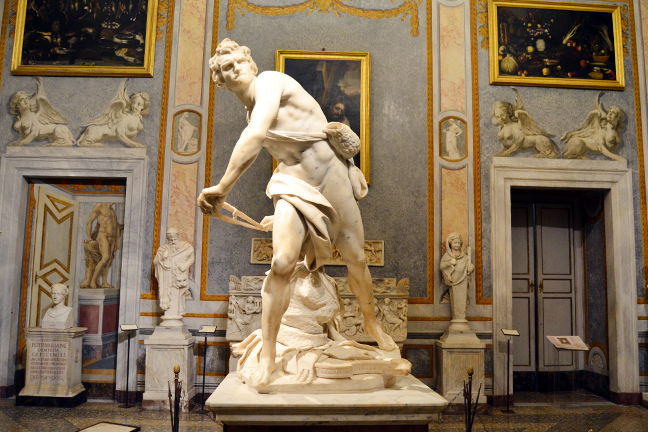




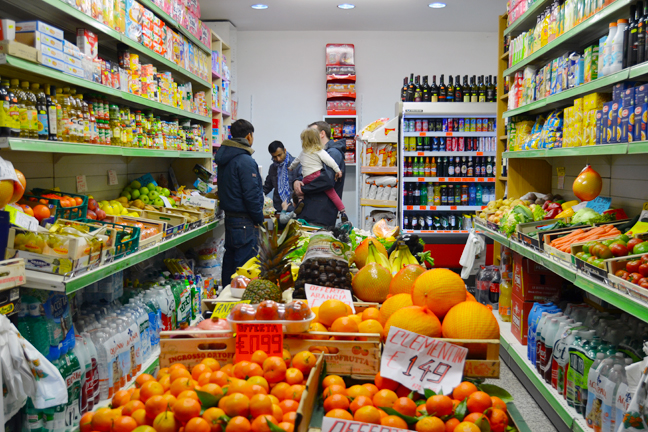






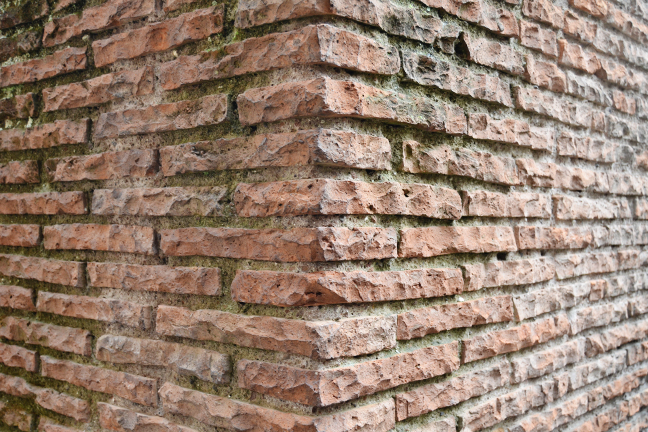



















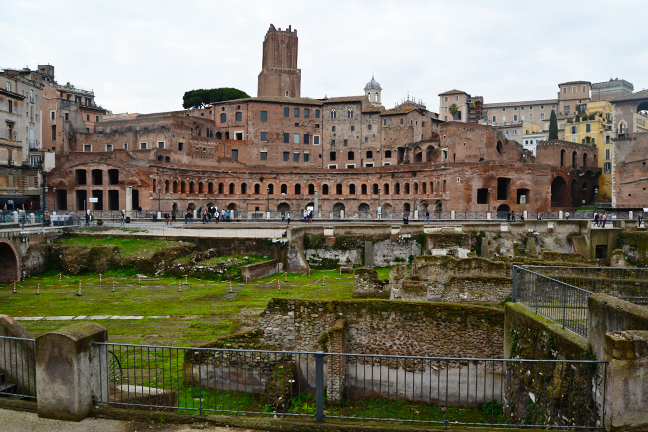





































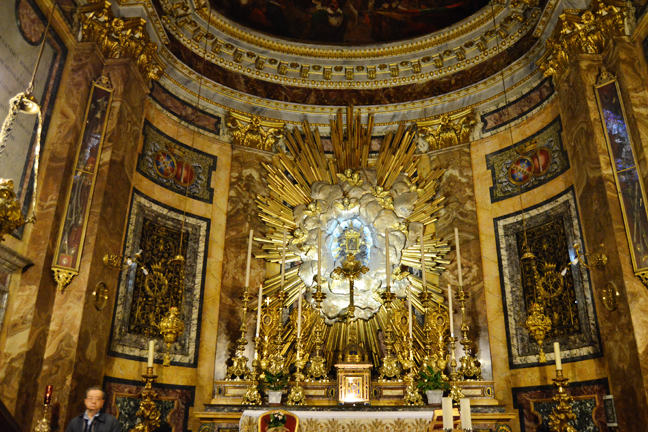



Outstanding recap! When in Rome!
ReplyDeletereally glad you enjoyed your time in my beautiful country!
ReplyDeletethere are just soooo many beautiful places in Italy :)
Wow wow wow!! What an amazing trip!! LOVING all the photos!! I just know that those Jane umbrella photos will end up on a gorgeous page soon!!!!!!!
ReplyDeleteThis brought back a lot of fun memories from my trip to Rome in high school :) I remember waiting FOREVER for a bus in Rome...and that was 12 years ago, so I think crazy public transportation is a long-term thing.
ReplyDeleteHoly COW, Paige! What an amazing recap of an amazing city. Your photos are beautiful. I wish I'd have been there with you.
ReplyDeleteOh gosh, I really hope to go there some day! SO pretty!!!!
ReplyDeleteOH. MY. GOSH!!!! These pictures are incredible. I remember so many of these things from Art History and I can't believe you guys got to see them IN REAL LIFE!!
ReplyDeleteP.S. I love your shoes!!